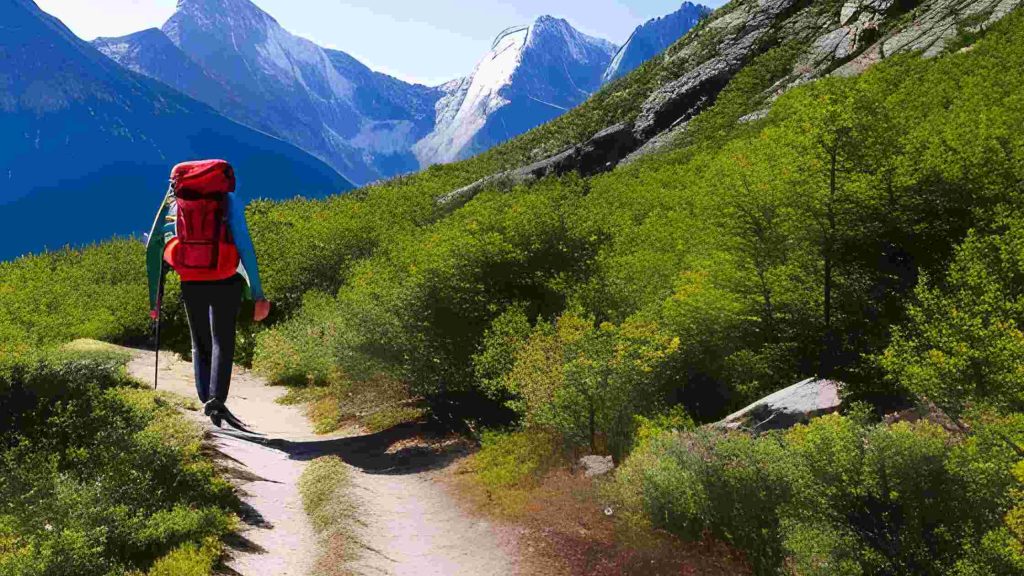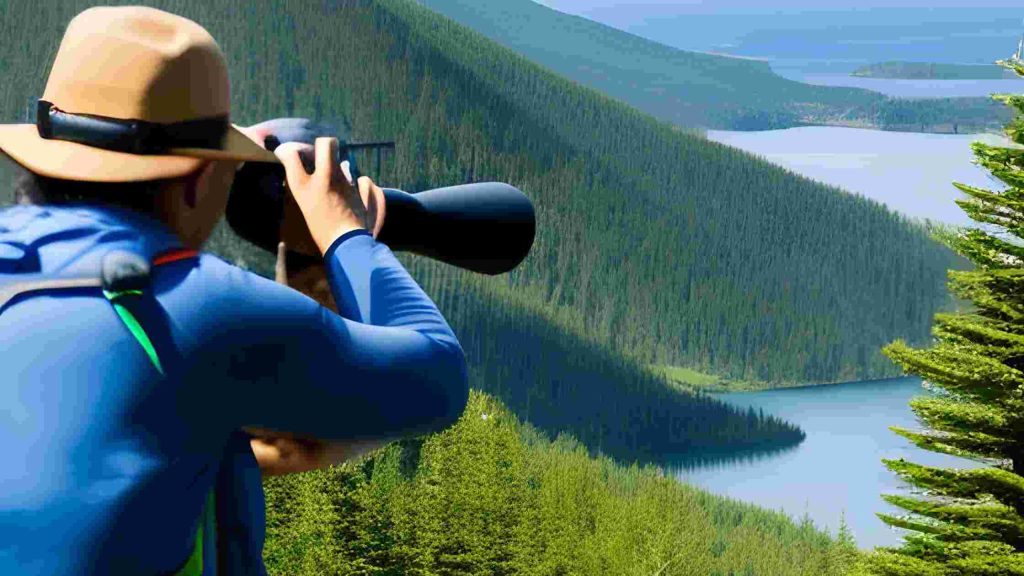
While camping can be a rewarding and uniquely memorable experience, it’s vital that we engage with nature responsibly in order to preserve our environment for future generations.
According to the Guardian, nature-based tourism has become one of the fastest growing sectors in the travel industry. In fact, Statista reports that the global eco-tourism sector produced an estimated $172.4 billion in revenue in 2022. In the United States alone, sustainable tourism grew to $25.6 billion in 2021 and is steadily increasing.
In this blog post, we’ll explore eco-friendly camping activities and sustainable practices for your next camping trip that will reduce your environmental footprint while camping, and also deepen your connection with Mother Earth.
Key Takeaways
- Eco-friendly camping involves sustainable practices that have low environmental impact.
- Leave No Trace principles are the foundation of eco-friendly camping, which include leaving campgrounds in a better condition that how you found them, conservation of natural resources, and respecting wildlife in their natural habitats.
Tips for Eco-Friendly Camping
1: Choose a sustainable campsite
Choosing a sustainable campsite is the first step to be more eco-friendly. When selecting your campground, pay attention to details like sustainable camping practices used at the location, the environmental impact of the campground location, access to renewable energy, and the types of amenities that are available.
Look for energy-efficient campsites that have recycling programs, water conservation protocols, and solar or wind powered electrical grids. Avoid campsites located in delicate or vulnerable ecosystems or areas with endangered species. In short, select an area with good safety practices that minimize harm to the natural environment and any wildlife that inhabits the area.
Sustainable, Eco-Friendly Campsite Resources:
United States:
- Eco-Ranch Sustainable Living Center, Alpine, Texas – Campsite that specializes in sustainable, eco-friendly living.
- The Eco Camp, Maine – Eco-friendly campsites situated across 10 acres of pine forest.
- Allicins Ranch, Moyie Springs, Idaho – Sustainable farming and eco-campsites with sheep and organic garlic cultivation.
- Santee Lakes Recreation Preserve, California – Campsite located on 190-acre park, with sustainable education in water preservation and recycling.
- The Resort at Paws Up, Montana – Luxury, eco-camping resort sustainable campsites.
- Yosemite National Park’s High Sierra Camps, California – eco-friendly campsite with composting toilets, recycling, solar powered energy and non-toxic cleaning products.
- D Acres Permaculture Farm, Rumney, New Hampshire
International:
- Domaine de Massereau Campsite, France – A luxury campsite nestled between Montpellier and Nimes that runs on 100% solar power and practices zero-waste trash management.
- Nysted Strand Camp, Denmark – This beachside campground runs along the Baltic sea and operates in partnership with the Danish Nature Conservation Society.
- Ons Buiten Campgrounds, Netherlands – This unique sustainable campsite is located in a nature reserve.
- CampingCard ACSI – A directory of 400+ sites across Europe for eco-camping.
2: Use second-hand camping gear or rented equipment
Used camping gear or equipment rentals is a creative and potentially more affordable way to be more eco-friendly when you enjoy the great outdoors. You don’t always need to buy new stuff, especially if you don’t go camping very often.
There are a number of online and offline resources to find second-hand gear that you can purchase, rent or sometimes even swap. As the saying goes, one person’s used gear is another person’s treasure! This also allows you the opportunity to try out different types of gear before committing to buy, which saves both money and resources.
Used Camping Gear, Trades and Swap Resources:
3: Pack sustainable, non-toxic camping products
Pack reusable water bottles and containers, and non-toxic products made specifically for camping, like biodegradable soaps and cleaning supplies, instead of single-use plastics, conventional cleaning agents or items that are not biodegradable.
- Non-Toxic Sleep Systems: Pack a sleeping bag and pad system that are free from toxic PFCs and PFAs chemicals, and flame retardants.
- Non-Toxic Cookware Bring silicone pots, pans, mugs, plates, bowls; single-use plates made from bamboo instead of plastic or paper; stainless steel or wooden cutlery.
- Biodegradable Cleaning Products and Toiletries: Stock your bag with camping soaps designed specifically for use in the wilderness, like Burt’s Bees and Campsuds; choose sunscreen with zinc oxide instead of oxybenzone or octinoxate, which have been known to cause damage to ocean life; try swapping your disposable razors for a safety razor.
- Rechargeable Batteries: Bring along rechargeable or solar powered batteries rather than disposable ones.
4: Explore Campsites Close to Home
If possible, choose a campsite close to your home base, in order to use less gas and reduce your carbon footprint. Camping closer to your point of origin helps minimize travel time and the associated environmental impacts.
Additionally, by selecting a campsite that’s local to you, you’ll be able to enjoy nearby farms and nature reserves, discover backcountry wilderness spots and reduce your fuel costs.
5: Build Responsible Campfires in Fire Pits and Fire Rings
Most designated camping areas provide fire pits and fire rings to safely build responsible campfires, and these should always be used instead of randomly building a fire wherever you want. This is because having an open flame on the ground can cause damage to fragile ecosystems and potentially spread wildfires.
Building a responsible campfire also means not setting up any kind of flame (or even smoke) near dry grass or wooded areas which can spark potentially devastating wildfires in the area.
To lower our impact on the nature, we must utilize these ‘primitive’ (and fun!) traditions in ways that don’t harm the environment or endanger humans and wildlife.
6: Practice Leave No Trace
The concept of “green camping” means that you leave no trace and treat wildlife with respect. This entails being mindful of human impact on the environment, properly disposing of waste, composting organic materials, never littering and using precious resources like water and energy responsibly.
Respecting wild animals also means that you should not approach or follow them; it’s also crucial to never feed them as this is dangerous for both the animals and humans – not all bears are as kind as Yogi. Feeding wild animals teaches them to be dependent on humans, which creates bigger problems down the line.
Ultimately, when we peacefully coexist with nature, our camping experience will be more rewarding and foster an appreciation of flora and fauna in its natural environment.
7: Leave Your Campsite Cleaner Than You Found It
Leaving your campsite cleaner than you found it is an essential part greener camping. Don’t leave food or trash out, and keep your area sparkling clean at all times. Make sure all garbage and waste are properly disposed of is one of the best ways to have minimal impact on the environment.
If you see trash on the ground, even if it isn’t yours, pick it up! Doing your part, one piece of garbage at a time, helps create a harmonious environment for all.
8: Practice Proper Waste Disposal
Sustainable waste management is paramount when you’re camping – it’s perhaps the single most important aspect of being in nature.
Trash must be disposed of correctly to protect the beauty of wild spaces, in addition to minimizing the risk of attracting wildlife, like bears. Sorting waste into proper trash receptacles, composting and recycling are way campers can reduce their environmental footprint.
It’s fundamental that all trash be gathered and packed out when leaving a campsite – burning or burying trash is a big NO NO, as this can harm both the environment and wildlife, so these practices should always be avoided.
9: Respect wildlife and stay on designated trails
It is important to respect wildlife and stay on designated trails because straying off marked paths can not only disturb and harm the surrounding environment, but it also puts wildlife at greater risk of injury or displacement.
By staying on designated trails you’ll help minimize the impact on natural habitats and life cycles, which helps protect plants and animals. Further, by keeping a respectful distance away from wild animals, they’ll likely feel less threatened and hopefully be easier to spot and admire from a distance.
10: Minimize Packaging and Bring Reusable Containers
Minimizing packaging and bringing reusable bags is an important part of eco-friendly camping. Not only does this significantly reduce the amount of waste created during the trip, it also helps to lessen its impact on the environment.
For example, when you bring environmentally-friendly containers for snacks, leftovers or drinks, you avoid using single-use plastic zip bags or store bought items pre-packaged in plastic wrap or boxes. Furthermore, if you buy food, opt for bulk items as much as possible instead of buying individual pieces wrapped in plastics.
11: Support Local Farmers
One of the best ways to help protect the environment is to support local farmers when buying food for your meals and snacks. Eating locally brings helps supports sustainable farming practices that save energy resources compared to large-scale commercial farms.
Even better, eating local fare is a great way to get your hands on fresh, organic produce, as well as helping to minimize waste from transportation, as well as packaging associated with imported foods.
12: Follow Proper Outdoor Restroom Practices
Responsible toilet hygiene is another super important part of spending time in nature in an environmentally friendly way. Luckily, in the age of modern camping, many campsites have designated restrooms, compostable toilets or some sort of established latrine.
However, there may be times where there are no restrooms available, especially in backcountry or dispersed camping areas. In these situations, make sure to follow proper outdoor restroom practices and choose carefully when selecting a place for your “private business”. Never forget that there other campsites and wildlife all around you, even when you think you’re in a remote location.
Before disposing of any waste, make sure to thoroughly wrap solids and bury them at least six inches into the ground, away from rivers, streams, camping and hiking areas.
13: Use Sustainable Camping Gear
Here are some eco-friendly camping gear options:
- Sustainable hiking boots
- Solar lantern
- Sustainable cookware & cutlery set
- Non-toxic camping tent
- PFC- and PFA-free sleeping bag
- Eco-friendly camping stove
- Reusable water bottle
- Biodegradable cleansers & soap
- Compostable trash bags
- Solar-powered charger
- Natural, DEET-free bug repellent
- Reusable food containers
- Biodegradable toilet paper
- Eco-friendly fire starter

Low-Impact Camping Activities
Participating in Leave No Trace principles, conservation efforts, and sustainable energy sources are just a few ways to engage in eco-friendly camping activities.
| Activity | Environmental Impact |
|---|---|
| Hiking | Low impact |
| Fishing | Moderate impact |
| Wildlife observation | Low impact |
| Campfire cooking | High impact |
Benefits of Eco-friendly Camping
Camping sustainably can provide a multitude of advantages, including minimizing the human impact on the environment and promoting environmental conservation.
Minimizing impact on the environment
Campers can minimize their impact on the environment and reduce their carbon footprint by limiting travel distances, disposing of waste correctly, using reusable gear instead of disposable items, packing sustainable food options, treating wildlife with respect and using non-toxic products.
Utilizing eco-camping techniques also helps reduce air pollution from van or car travel and fire pits for cooking can provide warmth without overusing resources. Solar panel camping equipment is becoming increasingly available in stores which is considerably more environmentally friendly than disposable batteries which will eventually have to be disposed of properly after usage.
Promoting environmental conservation
Eco-friendly camping helps preserve and protect the environment by reducing or eliminating campers’ impact, including limiting resource consumption, such as water or firewood.
Campers can contribute to conservation efforts by following the principles of Leave No Trace, and, by also selecting an appropriate campsite restored with local flora if available, bringing a backcountry composter kit to properly dispose of waste, and not creating permanent disruption on land and vegetation while traveling around. It’s important to ensure the safety of nature and wildlife throughout the process.
Reducing greenhouse gas emissions
By taking steps to conserve energy, use sustainable transportation options, and adopt zero waste camping techniques, campers can make their outdoor adventures more environmentally responsible while still enjoying all that nature has to offer.
Sustainable transportation such as bicycling or walking will help minimize greenhouse has emissions; when possible, carpooling to your camping destination is another green alternative for getting around, ince it splits fuel costs and reduces overall emissions.
Keeping energy consumption in check by using rechargeable batteries instead of single-use cells helps further decrease carbon dioxide output. Minimizing packaging means bringing along reusable items instead of disposables; this includes anything from containers for food storage to dishes and utensils meant for mealtime on-site.
Encouraging wildlife spotting
If you’re into adventure, getting back to nature can provide opportunities to spot and observe amazing wildlife in their natural habitat. Activities like bird watching using binoculars, or camping near designated wild habitats is a wonderful way to safely observe animals from afar.

Eco-Friendly Camping Resources
Conscious Life and Sustainable Style’s Sustainable Camping Guide: 10 Tips for Eco Friendly Camping
Conserve Energy Future’s 20+ Impressive Tips For Going Green While Camping
Conclusion
Sustainable camping means the cultivation of different camping skills that allow you to enjoy the great outdoors without causing damage to sacred, natural spaces. The environmentally friendly tips outlined in this camping guide will minimize our impact on the environment, while also helping to build a stronger, deeper connection to the natural world.
Campers should remember that eco-friendliness does not have to compromise their outdoor experience–on the contrary, engaging in activities like camping and hiking can be even more rewarding when experienced with mindful environmental practices in mind.
As long as we stay conscious of how our actions are affecting nature, going green while camping will help protect the great outdoors for generations to come.







